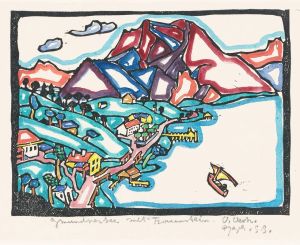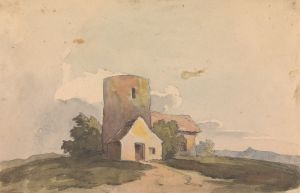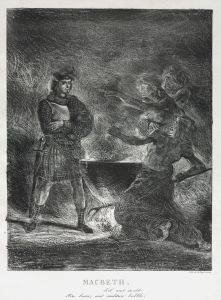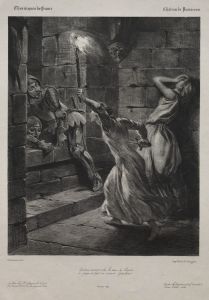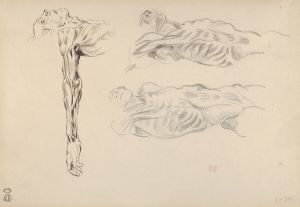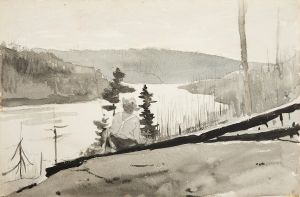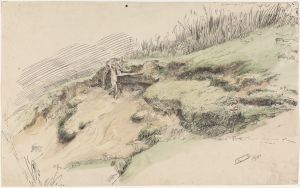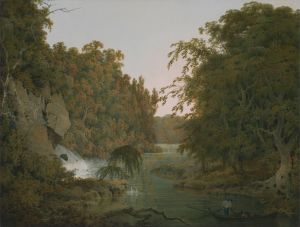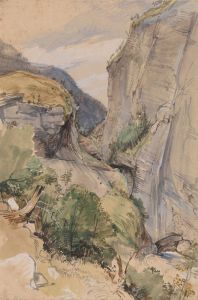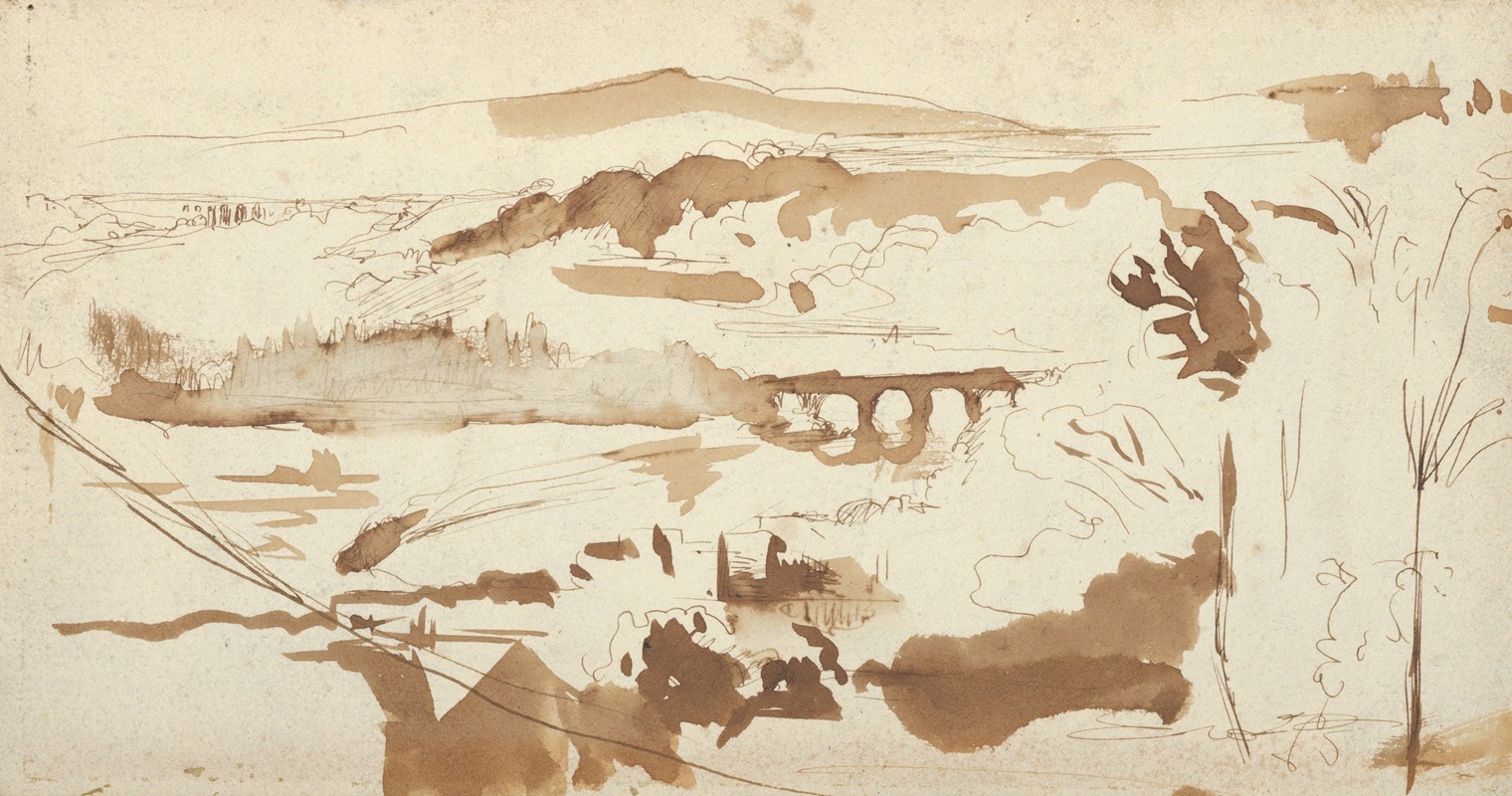
Landscape with an Aqueduct
A hand-painted replica of Eugène Delacroix’s masterpiece Landscape with an Aqueduct, meticulously crafted by professional artists to capture the true essence of the original. Each piece is created with museum-quality canvas and rare mineral pigments, carefully painted by experienced artists with delicate brushstrokes and rich, layered colors to perfectly recreate the texture of the original artwork. Unlike machine-printed reproductions, this hand-painted version brings the painting to life, infused with the artist’s emotions and skill in every stroke. Whether for personal collection or home decoration, it instantly elevates the artistic atmosphere of any space.
"Landscape with an Aqueduct" is a painting by the renowned French artist Eugène Delacroix, who is widely celebrated as a leading figure of the Romantic movement in art. Delacroix, born on April 26, 1798, in Charenton-Saint-Maurice, France, is known for his expressive brushwork and his use of color, which have had a significant influence on the development of both Impressionism and Post-Impressionism.
The painting "Landscape with an Aqueduct" showcases Delacroix's ability to capture the dramatic and emotive qualities of a scene, a hallmark of Romanticism. Although specific details about the creation date of this particular work are not widely documented, Delacroix's career spanned from the early 19th century until his death in 1863, a period during which he produced a vast array of works, including historical scenes, portraits, and landscapes.
In "Landscape with an Aqueduct," Delacroix depicts a serene yet powerful natural setting, dominated by the presence of an aqueduct. The aqueduct, an architectural structure used historically to transport water, serves as a focal point in the painting, drawing the viewer's eye across the landscape. Delacroix's use of light and shadow, along with his dynamic brushstrokes, imbues the scene with a sense of movement and vitality, characteristics that are emblematic of his style.
The composition of the painting reflects Delacroix's interest in the interplay between nature and human-made structures. The aqueduct, a symbol of human ingenuity and the ability to harness natural resources, stands in contrast to the untamed beauty of the surrounding landscape. This juxtaposition may reflect the Romantic fascination with the sublime, a concept that emphasizes the awe-inspiring and sometimes overwhelming power of nature.
Delacroix's landscapes often convey a sense of drama and emotion, achieved through his innovative use of color and texture. In "Landscape with an Aqueduct," the artist employs a rich palette, with earthy tones and vibrant hues that capture the essence of the natural world. His technique of layering colors and using bold, sweeping strokes creates a sense of depth and atmosphere, inviting the viewer to immerse themselves in the scene.
While Delacroix is perhaps best known for his larger historical and literary paintings, such as "Liberty Leading the People" and "The Death of Sardanapalus," his landscapes reveal another dimension of his artistic talent. These works demonstrate his keen observation of nature and his ability to convey its beauty and power through his art.
"Landscape with an Aqueduct" is a testament to Delacroix's skill as a painter and his contribution to the Romantic movement. His innovative approach to color and composition has left a lasting legacy, influencing generations of artists who followed. Although this particular painting may not be as widely recognized as some of his other works, it remains an important example of his exploration of landscape as a subject and his mastery of the Romantic style.
In summary, Eugène Delacroix's "Landscape with an Aqueduct" exemplifies the artist's ability to blend natural and architectural elements into a cohesive and evocative composition. Through his use of color, light, and dynamic brushwork, Delacroix captures the essence of the Romantic spirit, celebrating both the beauty and the power of the natural world.





